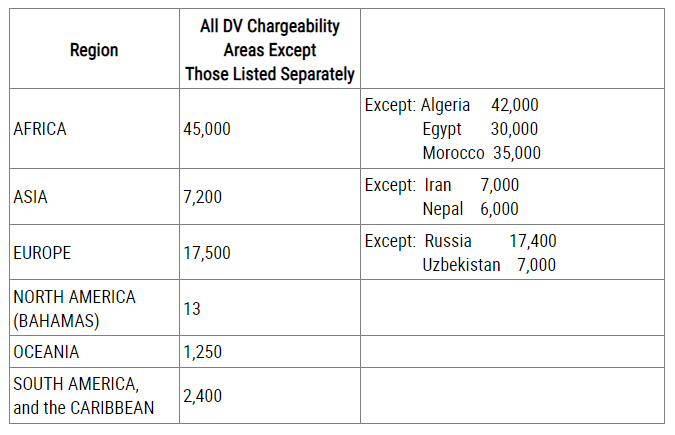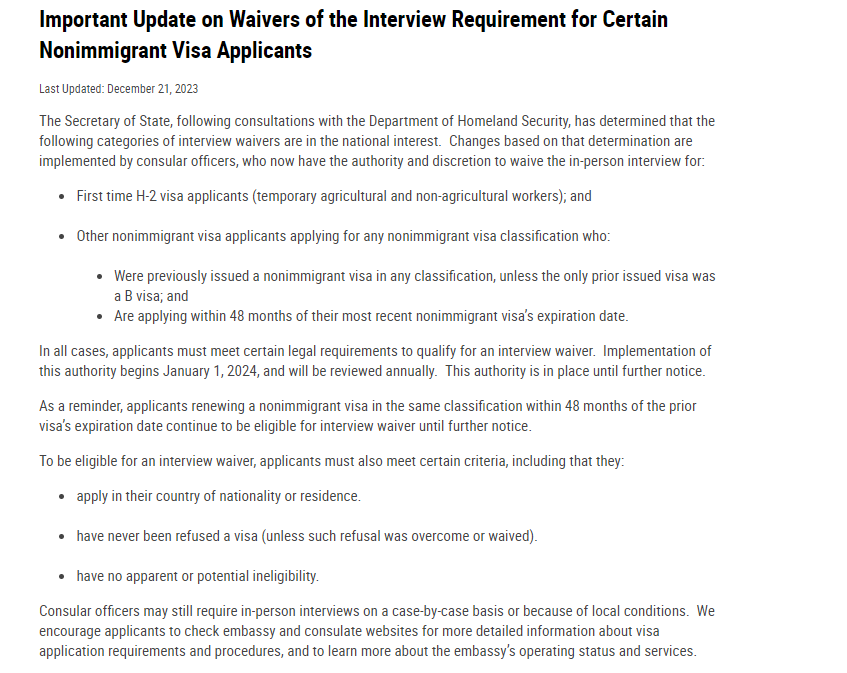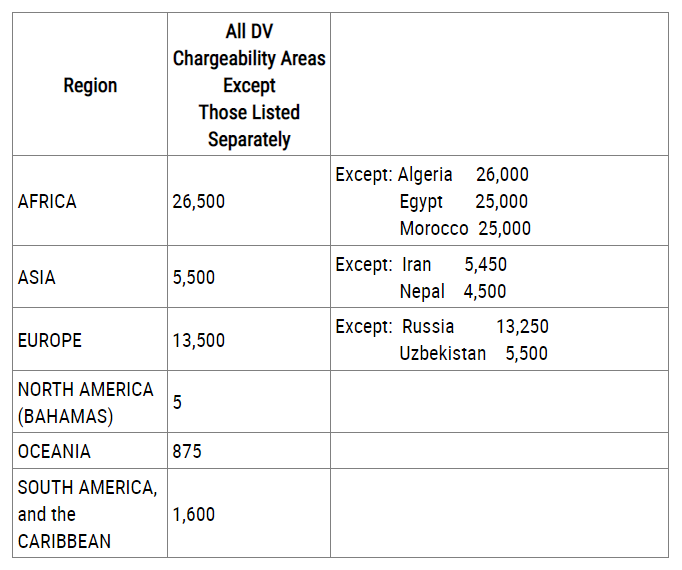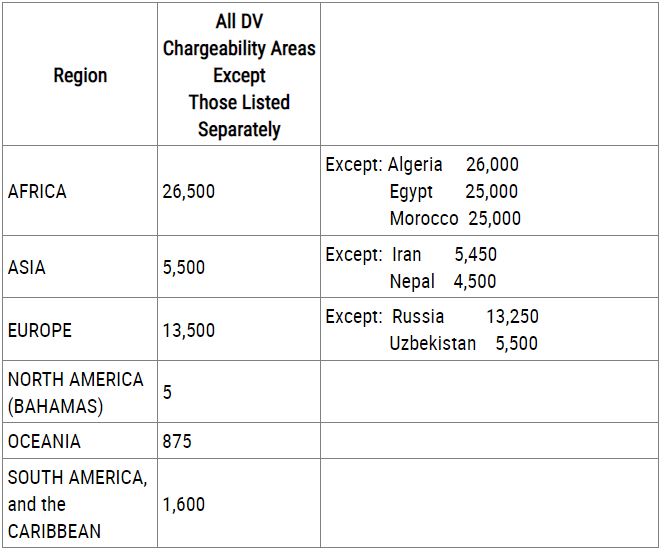This is yet another crucial document in the DV process, the DS-260 confirmation page. It is officially known as the Immigrant Visa and Alien Registration Confirmation page.
DS-260 Confirmation Page
What is DS-260 Confirmation Page? That document is the page that you get once you have completed filling the DS-260 form and you’ve clicked on “submit”, after submitting, then that page comes.
Question: When you complete and submit your DS-260 form, do you receive an email to confirm that you have submitted that DS-260 form?
Answer: Many people receives an email to affirm that, but also many people claim they do not receive that email. The confirmation page, as seen above, comes to confirm that you have successfully submitted the DS-260 form to the KCC.
DS-260 Confirmation Page Sample
Below is the DS-260 Confirmation Page sample:
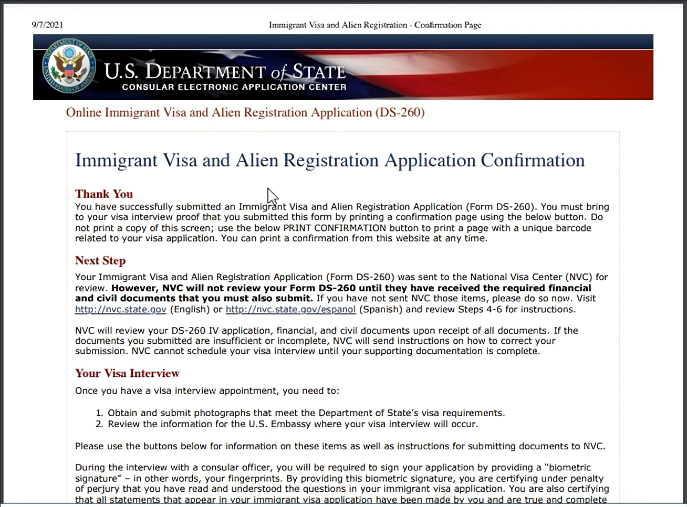
It’s a two pager, as can see, it have immigrant visa and alien registration application confirmation. So it confirms that you have submitted the DS-260 form. Its states:
“You have successfully submitted an immigrant visa and alien registration application form, i.e from DS-260. This is a confirmation approved that you have submitted your DS-260 form to KCC.”
Still on the DS-260 Confirmation Page
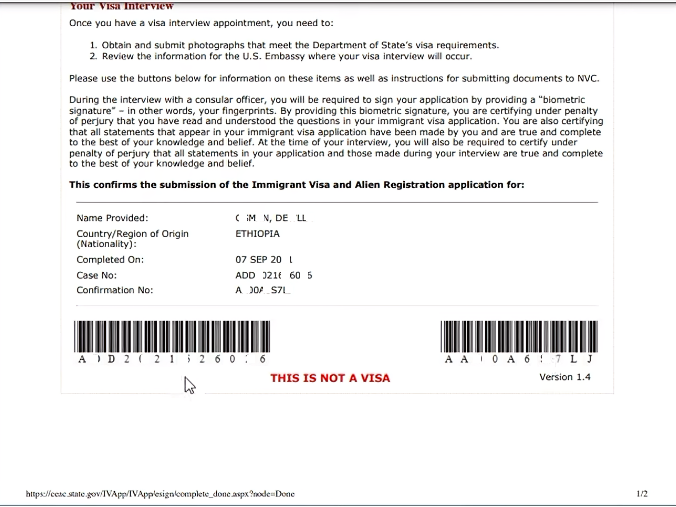
As you can see above, it has a barcode with unique number to you as the applicant, and all the beneficiaries will have the DS-260 forms and will have their unique number.
Having said that, remember that you are supposed to fill the DS-260 form yourself as the principal applicant together with each member of your family. So you fill your DS-260 form and then add another DS-260 form for each member of the family.
What this mean is that, if you have a spouse, you add DS-260 form for the spouse. Fill up all the details that are needed and then click “submit” and you will have a “confirmation page” for that spouse. The same case applies to the kids. Each one should have his or her own DS-260 form and eventually their own “DS-260 conformation page”.
If you are a family of three, you will have three DS-260 confirmation pages. Only the principal applicants will not fill the DS-260 form.
Where does this DS-260 confirmation page apply?
As you can see above, they tell you to print out this confirmation page. Every DS-260 confirmation page for each and every person of your family should be printed out. You should print it in several copies because of the several areas you will have to use this confirmation page.
On the same note, remember that you will need the confirmation page, most importantly, during these two places:
First place: The DS-260 confirmation page together with other documents will be needed during the medical examination. Once you receive your second notification letter and you have booked a medical appointment, you will need to carry with you the requested documents (among those requested documents is the confirmation page of the DS-260 form).
So you will carry your confirmation page together with those of your family members. Make sure you print several copies for each one of them because you need them during the medical examination.
Second place: You will this confirmation pages during the DV lottery interview itself. You will need all the confirmation pages for the DS-260 form during the interview. This is a confirmation that you indeed submitted the year DS-260 form, and you will be requested for it during the interview, so carry with you alongside other documents while going to the DV lottery interview.
In conclusion
DS-260 Confirmation Page/document is very important. It is highly advisable that you print this page, once you have submitted the DS-260 form, you print it immediately. However, it is not that it is a must that you do that, because when you visit this page and key in your details, you can access the page. So any time you want to print it, you can access it. But. It is highly advisable that you print it immediately.
This guide have explained important things regarding the DS-260 confirmation page, which have you know now, all the days DS-260 forms that you need and you know everything regarding that.
Thank you for reading this guide.
DISCLAIMER: This post and content is designed for general information only and is NOT legal advice. This site is not offering any Diversity Visa and is not the official site for DV Lottery program. The information presented in this post should not be construed to be formal legal advice. If you have any questions about the DV lottery, please contact an immigration professional/officer or a licensed attorney.
 Jobsscholar Jobs Search | Education Hub | Scholars Portal
Jobsscholar Jobs Search | Education Hub | Scholars Portal
